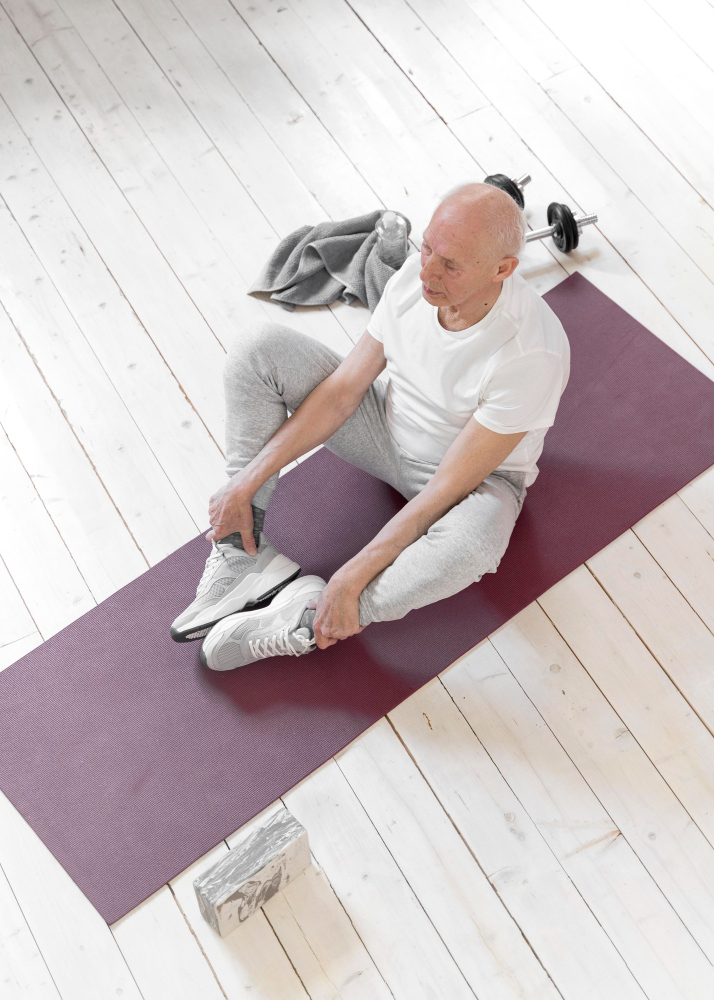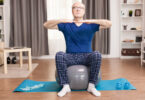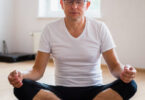Table of Contents
Introduction
Chair yoga is a fantastic way for seniors to maintain flexibility, enhance balance, and reduce stress, all from the safety and comfort of a chair. This article outlines a 30-day chair yoga plan for seniors looking to improve their health and well-being.
What is Chair Yoga?
Definition
Chair yoga is a form of yoga that modifies poses so that they can be done while seated. This method makes yoga accessible to those with mobility limitations or balance issues, which are common among older adults.
Benefits
The benefits of chair yoga for seniors include improved strength, flexibility, enhanced proprioception, stress reduction, and social interaction opportunities.
Getting Started with Chair Yoga
Chair yoga is an excellent way for seniors to improve their flexibility, strength, and overall health while reducing the risk of falls and injuries associated with traditional yoga practices. Here are some tips and steps to get started with chair yoga:
1. Choose the Right Chair
Select a sturdy chair that doesn’t hdoesn’tsn’t. doesn’t should have a flat seat and a straight back to provide proper support. It should also be at a height where your feet can comfortably rest flat on the floor when sitting.
2. Wear Comfortable Clothing
Opt for loose, comfortable clothing that allows for easy movement. You don’t wear clothes to restrict your mobility during the exercises.
3. Create a Safe Space
Ensure the area around you is clear of obstacles that could cause tripping or other accidents. You might want to have a yoga mat under the chair to prevent it from slipping.
4. Start with Breathing Exercises
Begin each session with deep breathing exercises to help you relax and focus. Inhale deeply through your nose, hold for a few seconds, and then exhale slowly through your mouth.
5. Incorporate Gentle Stretches
Start with simple stretches to warm up your body. You can perform neck rolls, shoulder shrugs, and arm raises—all from the safety of your chair. These movements help to loosen the muscles and prepare your body for more active poses.
6. Progress to Chair Yoga Poses
Here are a few basic poses to get you started:
- Seated Cat-Cow Stretch: Place your hands on your knees. As you inhale, arch your back and look up, stretching your abdomen. As you exhale, round your back and drop your chin to your chest.
- Seated Mountain Pose: Sit straight, extend your arms overhead, and stretch your fingers wide. This pose helps to improve posture and balance.
- Seated Twist: While seated, place your right hand on the back of the chair and twist your torso to the right, holding on to the chair for support. Repeat on the left side.
7. Use Props If Needed
Don’t use props such as cushions, straps, or blocks to make the poses more comfortable and to accommodate any mobility limitations.
8. Listen to Your Body
It’s important to move within your range of limits and not push your body into discomfort or pain. If a pose feels uncomfortable, make adjustments or skip it.
9. End with Relaxation
Finish your session with a few minutes of relaxation. Sit comfortably in your chair, close your eyes, and focus on breathing. This helps to integrate the benefits of the session into your body and mind.
10. Consistency Is Key
Practice regularly to see the best results. A few minutes daily can significantly affect your flexibility, strength, and mental clarity.
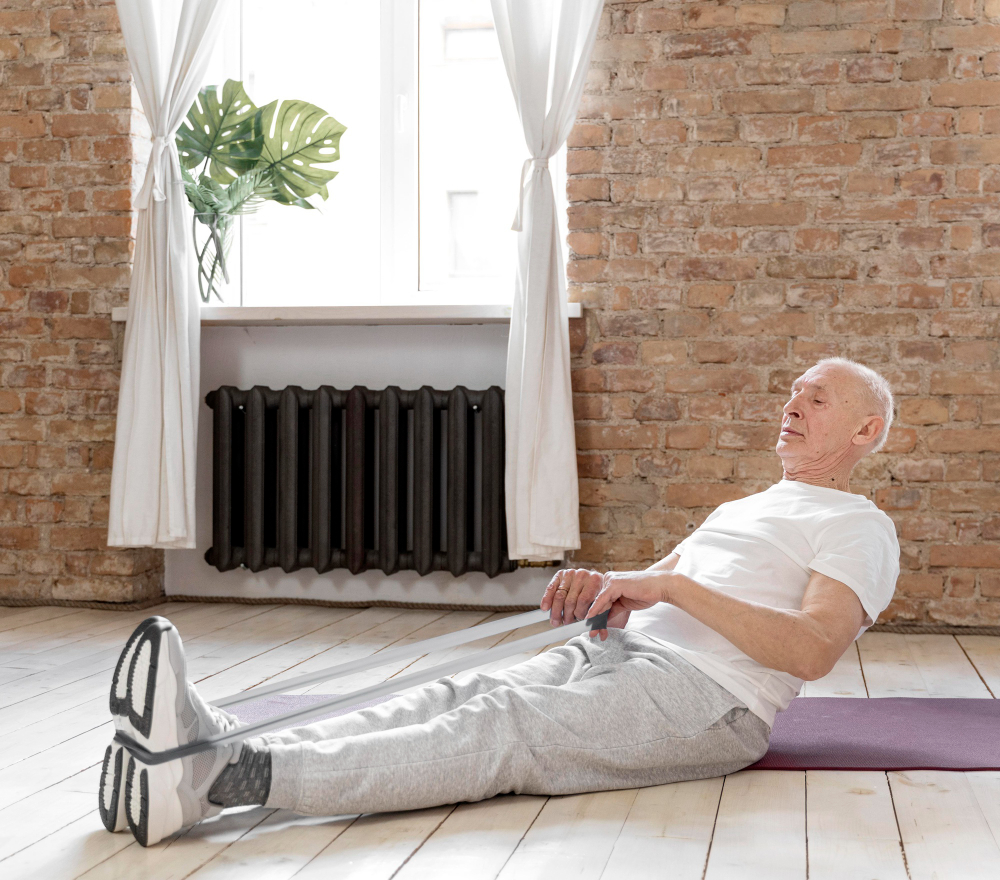
30-Day Chair Yoga Plan
Creating a 30-day chair yoga plan for seniors can help establish a routine that improves flexibility, strength, balance, and mental wellbeing. Here’s a Here’ss. There are gradual builds in complexity, but it remains gentle throughout. Each session should start with a brief warm-up and end with a cool-down period.
Week 1: Introduction to Chair Yoga
- Day 1: Introduction to breathing techniques and basic stretches
- Day 2: Seated side bends and overhead stretches
- Day 3: Gentle seated twists and neck stretches
- Day 4: Shoulder circles and wrist stretches
- Day 5: Combining learned stretches into a flow
- Day 6: Introduction to leg and ankle stretches
- Day 7: Rest day or gentle breathing exercises
Week 2: Building Core Strength and Flexibility
- Day 8: Seated cat-cow stretches and spinal twists
- Day 9: Leg lifts and extensions to strengthen legs
- Day 10: Core strengthening with seated marching
- Day 11: Chair pigeon poses for hip flexibility
- Day 12: Combining core and leg exercises
- Day 13: Seated forward bend and seated mountain pose
- Day 14: Rest day or repeat favorite poses from the week
Week 3: Enhancing Balance and Coordination
- Day 15: Seated warrior poses for strength and balance
- Day 16: Practice transitioning from sitting to standing beside the chair
- Day 17: Chair-supported standing side bends
- Day 18: Standing calf raises using the chair for support
- Day 19: Gentle sun salutation modifications using the chair
- Day 20: Balance-focused session, incorporating earlier poses
- Day 21: Rest day or light stretching
Week 4: Deepening Practice and Relaxation Techniques
- Day 22: Combining seated and standing poses in a flow
- Day 23: Introduction to guided meditation techniques
- Day 24: Deep breathing combined with more extended hold poses
- Day 25: Full body stretches and twists
- Day 26: Focus on relaxation and releasing tension
- Day 27: A gentle flow of all learned poses
- Day 28: Rest day or guided relaxation
Bonus Days: Consolidating Practice
- Day 29: ParticipaParticipant’Participant’sandvorite poses
- Day 30: Review and reflect; gentle flow focusing on breath and mindfulness
Tips for Success
- Consistency: Try to practice at the same time each day to establish a routine.
- Mindfulness: Pay attention to how your body feels during each pose and make necessary adjustments.
- Hydration: Drink water before and after your sessions to stay hydrated.
- Enjoyment: Choose a quiet, comfortable spot and enjoy the process of nurturing your body and mind.
This 30-day plan is a gentle introduction to chair yoga that can help seniors increase mobility and reduce stress. It can be adjusted as needed to fit individual health requirements and preferences.
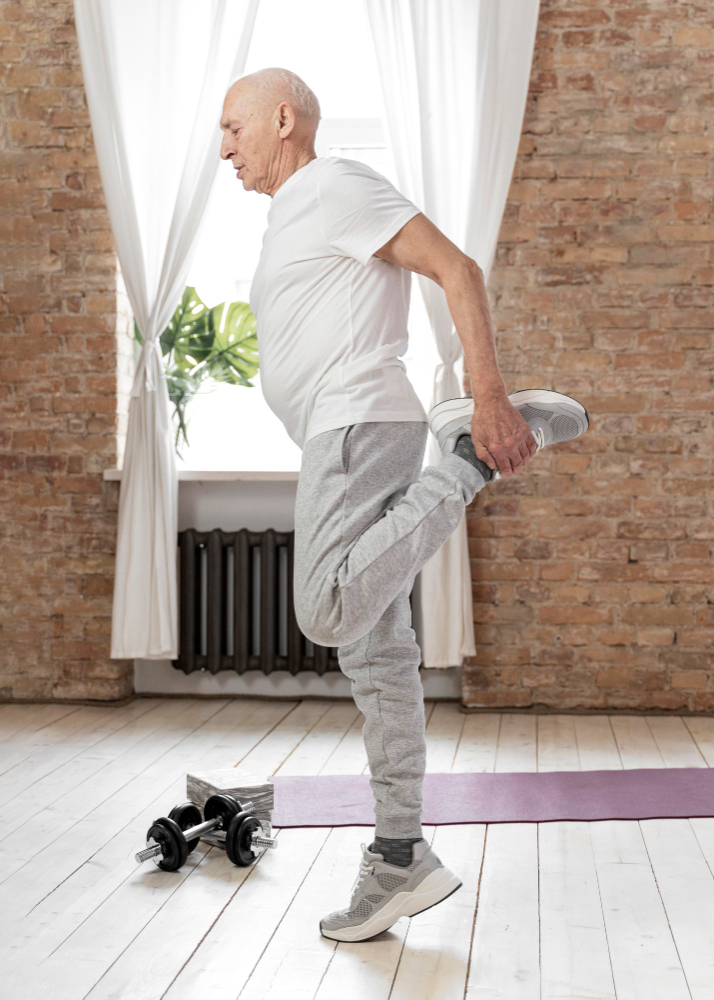
Tips for Success
Chair yoga is a fantastic option for seniors seeking to maintain or improve their physical health and mental wellbeing in a safe and accessible way. Here are some tips for success in practicing chair yoga, ensuring safety, enjoyment, and effectiveness:
1. Choose the Right Equipment
- Chair: Use a sturdy chair that doesn’t hdoesn’tsn’t. It doesn’t have a straight back without armrests for freedom of movement.
- Props: Have props like yoga straps, blocks, or cushions handy to modify poses and provide additional support.
2. Wear Appropriate Clothing
- Wear loose, comfortable clothing that allows you to move freely. Avoid belts, jewelry, or any accessories that might interfere with your practice or cause discomfort.
3. Create a Safe Environment
- Ensure your practice area is clear of any obstacles or slippery surfaces. Keep essentials like water, glasses, or medications within easy reach.
4. Warm-Up
- Begin each session with a gentle warm-up to loosen your muscles and joints. This can include simple neck rolls, shoulder shrugs, and arm raises.
5. Focus on Breathing
- Concentrate on deep, slow breathing to enhance relaxation and increase muscle oxygen flow. This not only helps reduce stress but also maintains focus throughout your practice.
6. Modify Poses as Needed
- Adjust the poses to fit your comfort level and physical capabilities. Use props to help achieve poses or hold them longer without strain.
7. Listen to Your Body
- Recognize the difference between good pain (mild discomfort from stretching) and bad pain (sharp or sudden). Do not push your body beyond what feels comfortable.
8. Practice Regularly
- Consistency is vital in yoga. Try to practice regularly, even for a few minutes each day. This will help you see a gradual improvement in flexibility, strength, and balance.
9. Stay Hydrated
- Drink plenty of water before and after your sessions, especially if you sweat or feel tired.
10. End with Relaxation
- Conclude each session with a period of relaxation. Sit comfortably with your eyes closed and focus on your breathing to integrate the practice practices into your body and mind.
11. Engage Socially
- If possible, join a group class or practice with a friend to make the experience more enjoyable and to encourage regular participation.
12. Consult Healthcare Providers
- If you have specific health concerns or conditions, consult your healthcare provider before starting a chair yoga program to ensure safety.
FAQs
1. Does chair yoga for seniors work?
Chair yoga is effective for seniors, particularly in improving flexibility, balance, and strength. It also provides significant mental health benefits, such as reducing anxiety and depression and enhancing overall wellbeing. The gentle nature of chair yoga suits individuals with mobility limitations or those who cannot participate in more strenuous exercise.
2. Can you lose weight doing chair yoga for seniors?
While chair yoga is not primarily designed for weight loss and is less intense than other forms of exercise, it can contribute to weight management by increasing muscle tone and improving metabolism. However, chair yoga should ideally be combined with other forms of physical activity and a balanced diet for significant weight loss.
3. Is the chair yoga plan free for seniors?
Many community centers, senior centers, and local libraries offer free or low-cost chair yoga classes for seniors. Online resources also provide free chair yoga tutorials and videos that can be practiced at home. While some programs might charge a fee, plenty of free options are available to ensure accessibility.
4. How many days a week should you do chair yoga?
The frequency of chair yoga sessions can vary depending on individual health and fitness goals. A good starting point for seniors is to aim for 2 to 3 sessions per week. This schedule allows for rest days between sessions, which are essential for recovery and preventing overuse injuries. As comfort and endurance improve, you might increase the frequency to 4 or 5 times a week, depending on your capacity and the advice of healthcare providers.
Conclusion
Chair yoga offers a safe, gentle way for seniors to improve their health and stay active. This 30-day plan allows seniors to experience the numerous benefits of yoga, tailored to their needs and abilities.
Related Article:
- Chair Yoga for Seniors – A Free Guide to Enhanced Wellbeing:
- URL: Chair Yoga for Seniors – A Free Guide to Enhanced Wellbeing
- Context: Provides a free comprehensive guide that can be linked when mentioning the basics or benefits of chair yoga.
- Creating a Yoga Space at Home:
- URL: Creating a Yoga Space at Home
- Context: This is ideal for linking when discussing “Finding “the “Right Sp “ce” for practicing yoga at home.
- Free Printable Chair Yoga Exercises:
- URL: Free Printable Chair Yoga Exercises
- Context: It is helpful to link from the “Daily Ro” to the “e Example” section, providing readers with printable resources to follow along.

